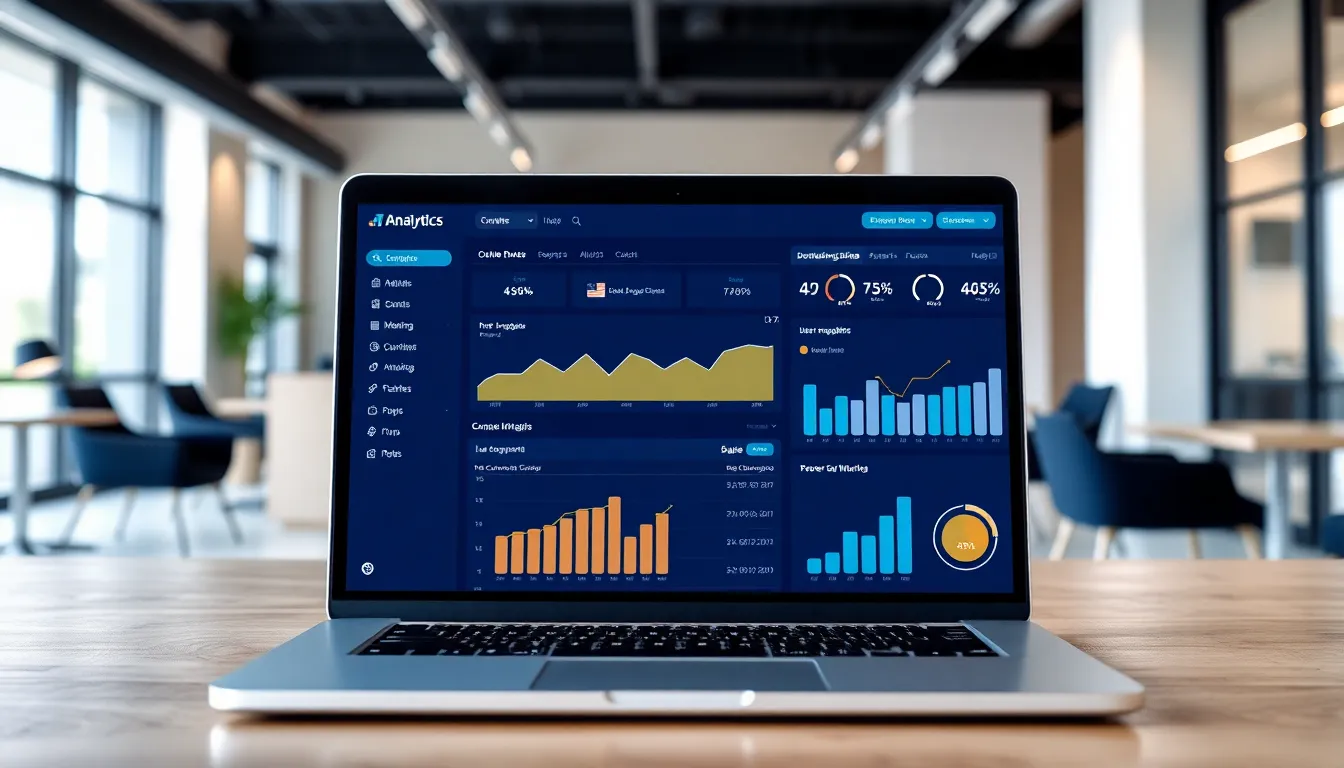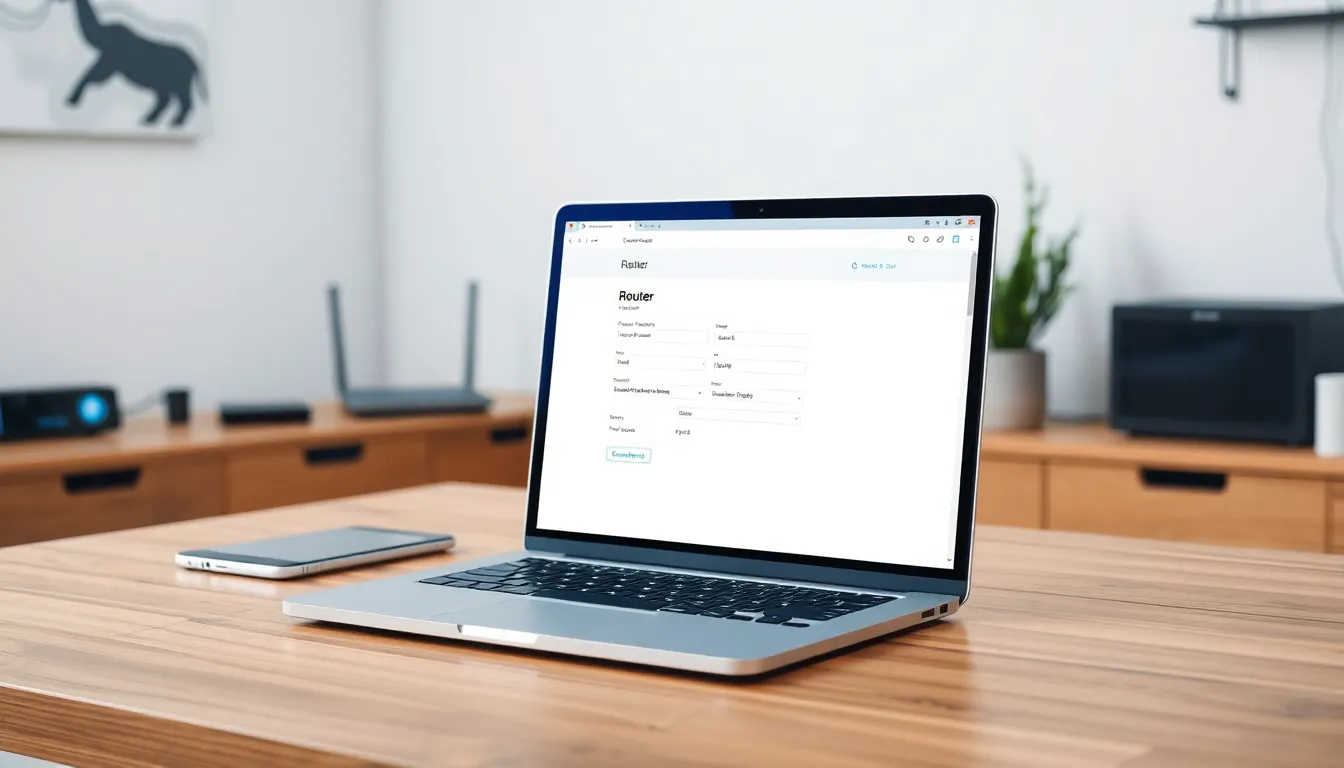Table of Contents
ToggleIn today’s app-saturated world, knowing your users is like having a secret weapon. Analytics for mobile apps isn’t just a fancy buzzword; it’s the magic potion that turns casual users into loyal fans. Imagine trying to bake a cake without a recipe. That’s what launching an app without analytics feels like—chaotic and likely to end in disaster.
With the right analytics tools, developers can dive deep into user behavior, preferences, and trends. It’s like having a crystal ball that reveals what users love and what makes them run for the hills. So, if you want your app to stand out, buckle up and get ready to explore the fascinating world of mobile app analytics! It’s time to turn those numbers into actionable insights and watch your app thrive.
Overview of Analytics for Mobile Apps
Mobile app analytics provide critical insights for developers navigating the fast-paced app market. These analytics track user engagement, in-app behavior, and demographic data, facilitating informed decision-making. Various tools, such as Google Analytics for Firebase and Flurry, allow real-time monitoring of user activity.
Implementing analytics reveals user preferences, helping developers tailor content and features. The data gathered allows for segmentation of users based on behaviors, ensuring targeted marketing strategies can be executed effectively. Additionally, app performance metrics like retention rates and session duration offer a clear picture of user satisfaction levels.
Using A/B testing in conjunction with analytics enhances the ability to refine app functionalities. It allows developers to analyze which features users prefer and guides UX improvements. Mobile app analytics also support revenue generation strategies by identifying in-app purchases and ad performance.
Competitiveness in the app market hinges on strong data analysis capabilities. Developers leveraging detailed analytics can make faster adjustments to their apps and stay ahead of trends. Understanding user journeys enables developers to identify bottlenecks and optimize experiences accordingly.
Engagement metrics play a vital role in retention strategies. From monitoring user lifecycles to analyzing churn rates, analytics help in crafting campaigns that resonate with users. Data-driven insights are invaluable assets for enhancing user satisfaction and loyalty, ultimately driving app success.
Importance of Analytics for Mobile Apps


Analytics play a crucial role in the success of mobile apps, providing insights that drive user engagement and retention. Developers rely on these insights to create a competitive edge in the rapidly evolving app market.
Understanding User Behavior
User behavior analysis reveals how individuals interact with the app. Insights into specific actions, such as navigation patterns and feature usage, help identify engagement levels. Users may favor particular functionalities, highlighting areas for enhancement. Tracking how users transition through the app allows developers to spot drop-off points, enabling them to optimize user journeys. Behavior patterns further inform personalized experiences, increasing the likelihood of user retention. Understanding these nuances cultivates loyalty and ultimately drives app growth.
Measuring App Performance
App performance metrics provide essential data for gauging success. Key indicators include retention rates, session duration, and user acquisition costs. Tracking these metrics allows developers to assess the effectiveness of marketing campaigns. Identifying trends in performance data assists in recognizing opportunities for improvement. Developers can use this information to refine functionalities and create targeted updates. Regular performance measurement leads to enhanced user satisfaction, contributing to long-term app success.
Types of Mobile App Analytics
Mobile app analytics offer different types that help developers gain insights into user behavior and app performance. Understanding these types enables developers to make informed decisions that drive app success.
In-App Analytics
In-app analytics focus on tracking user interactions within the application. By monitoring metrics such as session duration, screen views, and in-app events, developers can assess user engagement levels. For example, tools like Mixpanel and Amplitude provide detailed reports on user actions, allowing developers to understand how users navigate through the app. Analyzing this data uncovers pain points and opportunities for improvement. Developers can optimize features based on real user feedback, enhancing overall user experience. Relying on in-app analytics helps pinpoint where users drop off in their journey, enabling targeted enhancements that foster loyalty.
Marketing Analytics
Marketing analytics track the effectiveness of marketing campaigns related to the mobile app. By utilizing tools such as Adjust or Branch, developers measure user acquisition channels and conversion rates. Understanding which advertising strategies yield the highest ROI helps developers allocate resources more effectively. For instance, analyzing user acquisition from social media versus organic search provides clarity on optimal marketing tactics. Segmenting users based on their source of acquisition allows for targeted campaigns, improving retention rates. Developers gauge the success of campaigns through tracking metrics like user lifetime value and engagement, ensuring strategies align with business goals.
Tools and Platforms for Mobile App Analytics
Mobile app analytics tools provide developers with critical insights to enhance app performance and user engagement. Developers can choose from a variety of platforms to meet their specific needs.
Popular Analytics Tools
Google Analytics for Firebase serves as a leading choice for many developers, offering real-time data tracking capabilities. Flurry delivers comprehensive analytics focused on user engagement and demographics. Mixpanel provides in-depth analysis of user interactions, allowing for detailed exploration of app behavior. Amplitude focuses on tracking user journeys, making it easier to identify friction points and enhance user experience. Adjust specializes in marketing analytics, granting insights into acquisition channels and campaign performance. Branch supports link management and attribution, optimizing marketing strategies for maximum effectiveness.
Choosing the Right Tool
Selecting the appropriate analytics tool depends on app goals and target audience. Budget constraints often dictate options, so finding a cost-effective solution is essential. Features and integrations also play a significant role in decision-making; developers should consider platforms that integrate well with existing systems. Evaluating ease of use can simplify implementation and reduce training time. Scalability is another factor; developers should opt for tools that can grow alongside the app’s user base. Ultimately, making an informed decision results in enhanced tracking and improved app performance.
Best Practices for Using Analytics
Utilizing mobile app analytics effectively requires adherence to best practices. Developers focus on understanding user behavior and transforming insights into actions.
Setting Goals and KPIs
Establishing clear goals and key performance indicators (KPIs) is essential. These metrics guide the direction of analytics efforts. Goals may include improving user retention rates or increasing in-app purchases. Key performance indicators help track progress toward these objectives. For instance, targeting a 20% increase in daily active users over three months provides a quantifiable focus. Aligning the app’s purpose with specific goals ensures accurate data collection and interpretation. Developers monitor performance regularly to assess whether strategies are meeting desired outcomes.
Analyzing Data Effectively
Analyzing data requires a structured approach to extract valuable insights. Importantly, focusing on user behavior patterns helps developers identify strengths and weaknesses. Examining engagement metrics, like session duration and screen views, reveals areas for enhancement. In addition, segmenting users based on demographics or behavior facilitates targeted analysis. Developers gain deeper understanding by evaluating user flows and drop-off points within the app. Utilizing visualization tools simplifies data interpretation, making trends more apparent. Ultimately, these analysis techniques drive informed decision-making that enhances app performance.
Mobile app analytics are essential for developers aiming to thrive in a crowded market. By leveraging the right tools and strategies, they can transform raw data into actionable insights that drive user engagement and retention. Understanding user behavior not only helps in optimizing app performance but also fosters loyalty among users.
With the ability to track performance metrics and refine user experiences, developers can make informed decisions that enhance satisfaction. Embracing analytics empowers them to stay ahead of trends and continuously improve their apps. Ultimately, the strategic use of mobile app analytics paves the way for long-term success and growth in the competitive app landscape.





